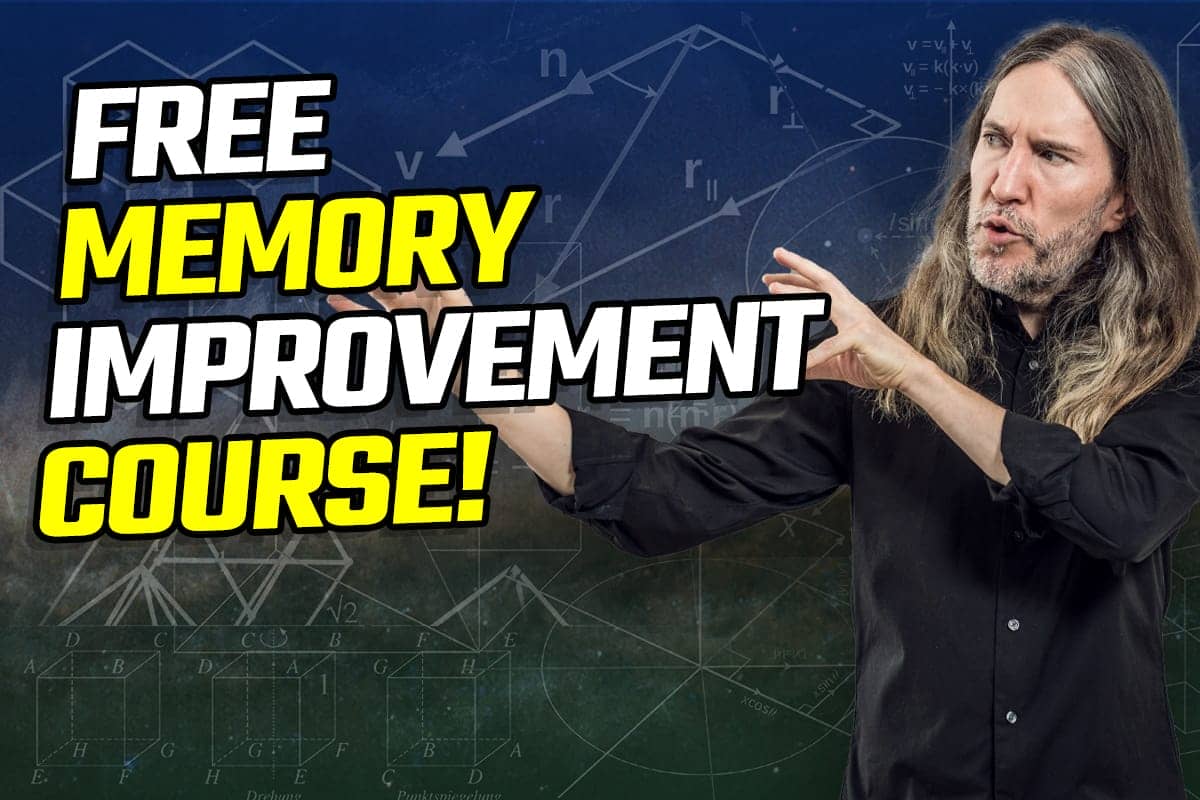 Want to activate your subconscious mind?
Want to activate your subconscious mind?
The standard exercises you see on the Internet probably haven’t gotten you very far.
Why?
They’re often operating on a false definition of what counts as your “subconscious.”
There’s little or no science behind what they’re talking about.
And they’re exploiting your pain while stoking the fire of your dreams.
Instead of giving you legitimate subconscious exercises that really can help you experience the full and complete power of your mind.
So if you’re ready for the real deal when it comes to subconscious mind techniques, you’re in the right place.
Let’s get started!
What Is The Subconscious Mind And How Does It Work?
The notion of the subconscious probably first appeared in the early works of Sigmund Freud. According to the Oxford Dictionary of Psychology, Freud used the term to refer to the unconscious, but quickly abandoned it because it was too vague.
Here’s the full definition:
“That part of the mind containing memories and motives of which the subject is not personally aware except with much effort.”
Another term to be aware of is “preconscious.” Freud described it in The Interpretation of Dreams.
In this work, he noted a “barrier of censorship” between the preconscious and the unconscious. This idea was later replaced with his notion of the id-ego-superego.
For our purposes, we are using mind power techniques to influence deeper levels of our awareness. And we’re approaching it in a way that reduces the effort involved.
To do that, we’re not going to learn to influence ourselves through a variety of subconscious mind techniques.
How to Activate the Subconscious Mind: 11 Subconscious Mind Exercises and Techniques
Unfortunately, people use the term “subconscious” in so many ways, it’s basically become meaningless.
But now that we have a basic working definition grounded in the origins of the term, let’s get into specific exercises.
Exercise One: The Treasure Map
A treasure map, sometimes called a vision board, is a highly visual representation of a desired goal.
I’ve used them several times in my life. They help keep the outcome I committed to in my line of site at all times.
There’s no doubt in my mind that this technique works. For example, I once wanted to rejoin a band and travel all over Europe as a bestselling author.
I put that treasure map in 3 locations in my apartment. Within a few months, I was doing just that.
Later, I wanted to live on the beach. So I put a beach on my treasure map. Within a short period of time, I was living in Australia with easy access to the beach. A few years later, I now live only 5 minutes walk from the shore.
The trick with using a treasure map is to make sure that the goal you visually represent is true. The next exercise will help with that.
Exercise Two: The Perfect Present Exercise
If you’re 100% certain that you’re using the treasure map to activate your subconscious mind towards a true goal, you can skip this exercise.
However, many of us are not honest with ourselves. We often try to fulfill the dreams of others instead of our own.
To avoid this problem, do this instead:
Write down your perfect day in 3-5 sentences. Then repeat the exercise for the next 90 days.
If your stated outcome is not honest, you’ll find it very difficult to complete the exercise. Your conscious and your conscious mind are rejecting the stated outcome.
When you find that you cannot continue writing down the goal, shift it to one that is more true to what you really want.
If you really want it, you should have no problem writing it out over a 90-day period.
As a quick case study: I started this exercise by trying to fulfill the dream of another person. 11 days in, I realized this and pivoted to writing down what I really wanted. Then I made the treasure map and very quickly achieved the goal.
Exercise Three: Dream Recall
Training your mind to remember your dreams is one of the most powerful subconscious learning techniques.
Seriously:
What better way to learn what your mind really thinks than by recapturing the imagery it produces while you’re asleep?
Improving your ability to remember dreams is easy. Just follow these steps:
- Designate a journal specifically for writing down your dreams
- Write down the date before you go to bed
- Mentally intend to remember your dreams
- Document as many scenarios, images and people as you can upon awakening
If you cannot remember anything, write that down. Then ask yourself, “Why can’t I remember anything?”
Within a few days, if not immediately, you should start remembering more dreams.
Exercise Four: Deep Listening
How often do people really tell it straight?
Not often enough, given all the conflict in the world. And one reason why is that we often prefer to encode what we really think in stories.
At least, this has been the controversial theory of people like Robert Haskell in Deep Listening and Robert Langs in Unconscious Communication in Everyday Life.
The easiest way to start listening deeply is this:
Start paying attention to when people are telling you stories. These can be stories about their past, their dreams or even the way they explain the story of a movie or book they’ve read.
Langs theorized that people “encode” three core anxieties in the stories they tell. These are:
- Predator anxiety
- Prey anxiety
- Existential anxiety
By learning to listen for the unconscious communication in them, you can start to interpret what might be going on.
Often, people will comment on what they think about your behaviors and you can reduce a lot of conflict in your life by subtly responding to the messages you start to pick up.
Exercise Five: Learn to Tell Stories
The flipside of learning to listen to encoded content in stories that people tell you is learning to encode themes in the stories you tell.
We tell stories to each other all the time. If someone explains that they’re going through a tough time, we tend to share a time when we’ve gone through a similar ordeal.
But Milton Erickson used stories differently. Rather than tell his patients stories to create empathy, he told stories that encoded ways that they could think their way to solving their own problems. Here’s an example based on a metaphor.
These so-called “therapeutic stories” are well-worth learning how to construct as an exercise in learning more about the subconscious mind. Can you spot the subconscious themes encoded in the story I shared in this TEDx Talk?
Exercise Six: Mind Mapping
When we’re feeling stuck, it can be hard to come up with exciting ideas that propel us towards taking action.
Mind mapping is the key to unlocking both ideas and motivation.
I follow some simple rules to make mind mapping effective and fun:
- Use the largest piece of paper possible
- Place an image or topic keyword in the center
- Use 3 colors for the central image
- Radiate outwards in a clockwise pattern starting at twelve o’clock to dig into the ideas
- Continue rotating colors
As an example, I release a YouTube video 3-4 times a month. I usually do that many articles on this blog as well.
When I have an idea for the content, I unpack everything my mind has to offer by following the above steps. It leads to much more detailed and nuanced content.
Exercise Seven: Environmental Reminders
Another great way to use mind maps is for designing projects and reminding yourself to complete them.
In my practice, I will often mind map a book project or video I’m working on. Then, to make sure I don’t forget to work on the project, I’ll leave the mind map visible in my environment until the work is done.
Likewise, I journal every day. To make sure I don’t forget to complete this powerful exercise, I leave the journal on my desk where I always see it.
This exercise relates to the treasure map exercise we discussed above, but it goes deeper. You can place multiple reminders in your environment to influence your subconscious mind.
Wayne Dyer also talked about placing visual reminders in his environment. As he discussed a few times in his programs, when he was writing a book, he would draw a basic design of the cover. Then he would keep it where he could see it until the book was done.
Exercise Eight: Memento Mori
Let’s extend the previous exercise with one of the most important subconscious mind techniques.
Although it can sound morbid to remind yourself of the fact that you will die, it’s an effective way to influence yourself to make better use of your time.
On my desk, I have three memento mori:
- Amor Fati coin
- “Catch you later” pin
- “Warrior of the Mind” brain cell
Amor fati means “love of fate.” Basically, it’s a reminder that none of us are in control of what happens. It’s a Stoic concept that helps us show up as our best selves even in the face of adversity.
A friend of mine used Mr. Death in a lot of his art. The idea of a Fred Astaire death figure dancing around and singing “Catch you later” is a great reminder not to take life too seriously. At the same time, it reminds you to enjoy life while you’ve got it.
And the “Warrior of the Mind” brain cell was given to me by Tony Buzan. It’s a physical reminder of just how precious each cell in the brain truly is when it comes to experiencing a strong mind.
To put this exercise into action, find objects that remind you of how precious life is and how easily it can be diminished or lost. Place them in areas where you’ll see them every day.
But don’t just spot them. Think deeply about them every day. It will vastly improve your life.
And if you have any doubts, just check out the research demonstrating just how useful reminders of death can be.
Nine: Memory-Based Meditation
It’s well-documented that meditation improves both physical and mental health, especially gratitude meditation.
However, many people struggle to concentrate long enough to meditate long enough to achieve a positive outcome.
That’s where Memory-Based Meditation comes in handy. As I discussed in my book, The Victorious Mind: How to Master Memory, Meditation and Mental Well-Being, bring the two together is a powerful way to improve focus and concentration.
When it comes to influencing the subconscious, I recommend using the alphabet to guide yourself through a gratitude meditation that is long enough to produce an effect.
Here’s how it works:
- Sit comfortably
- Close your eyes or at least soften your gaze
- Start at the letter A
- Think of a person you know whose name starts with that letter
- Reflect on your gratitude for that person
- Move on to the next letter
- Go as far though the alphabet as you can
- If you cannot think of someone for a letter, see if you can find an organization or institution (or just move on to the next letter
Now you have a structured pattern to follow that is easy, fun and repeatable.
Ten: Time Tracking
Now, a lot of people will look at a list of suggestions like this and think, “Great, now if only I had the time…”
In reality, most people have more than enough time to complete all of these exercises. But the reason they don’t feel like it is because they are leaking massive portions of their lives to social media.
Start Time Tracking and soon you’ll influence your subconscious mind to stop wasting time. To put this technique into practice, rather than keep a to-do list, write down the start and end time of each of your tasks.
I recommend that you do it with a pen or pencil on paper to activate as many parts of your arm, hand and eye muscles as possible. You’ll also have the journal right where you can see it, making it harder to forget the exercise itself.
Roy Furr calls this the difference between descriptive and prescriptive productivity.
In other words, when you’re using a to-do list, you’re prescribing activities you’re supposed to do. The mind resists this.
But when you describe what you’ve done, you give yourself a visual confirmation of your competence and your accomplishment in one go.
I recommend practicing Time Tracking for at least 90-days. This will give your brain enough time to rewire itself.
For more easy-to-read science on rewiring your mind, see Atomic Habits.
Eleven: Memory Training
People have been using the Memory Palace technique for thousands of years. It’s even being studied by scientists today in virtual environments with great results.
Now, the Memory Palace technique isn’t the only way to train your memory. You can also learn:
- 00-99 PAO System
- Pegword method
- Story and linking methods
- Using Memory Spaces
- Techniques for remembering dreams
Whatever memory training techniques you use, the key to using them to influence your subconscious mind comes down to what you memorize.
I’m a fan of long-form mantra memorization myself.
And the more robust and lengthy the information, the more robust the memorization system you’ll want to use.
To help with that, consider grabbing my FREE Memory Improvement Kit:
It walks you through everything you need to know. And it will help you dig deeper into the nature of your subconscious mind as you complete its simple and fun steps.
Mind Power Techniques On Tap
Ultimately, the best exercises are the ones you create for yourself.
To start the flow of ideas running, getting started is the best technique of them all. And now you have a bunch of subconscious mind exercises to kick off the adventure.
So what do you say?
Are you ready to become the architect of your dreams?
Enjoy this journey and I can’t wait to hear about your results!
Related Posts
- 9 Critical Thinking Exercises That Actually Improve Your Mind
Effective critical thinking exercises are hard to find. Stop wasting time and complete each of…
- Marek Kasperski on Tony Buzan's Legacy And Mind Map Mastery
Marek Kasperski has picked up the mantle left by Tony Buzan. Learn about mind mapping…
- Tap The Mind Of A 10-Year Old Memory Palace Master
Alicia Crosby talks to us about how she memorized all of Shakespeare's plays in historical…










